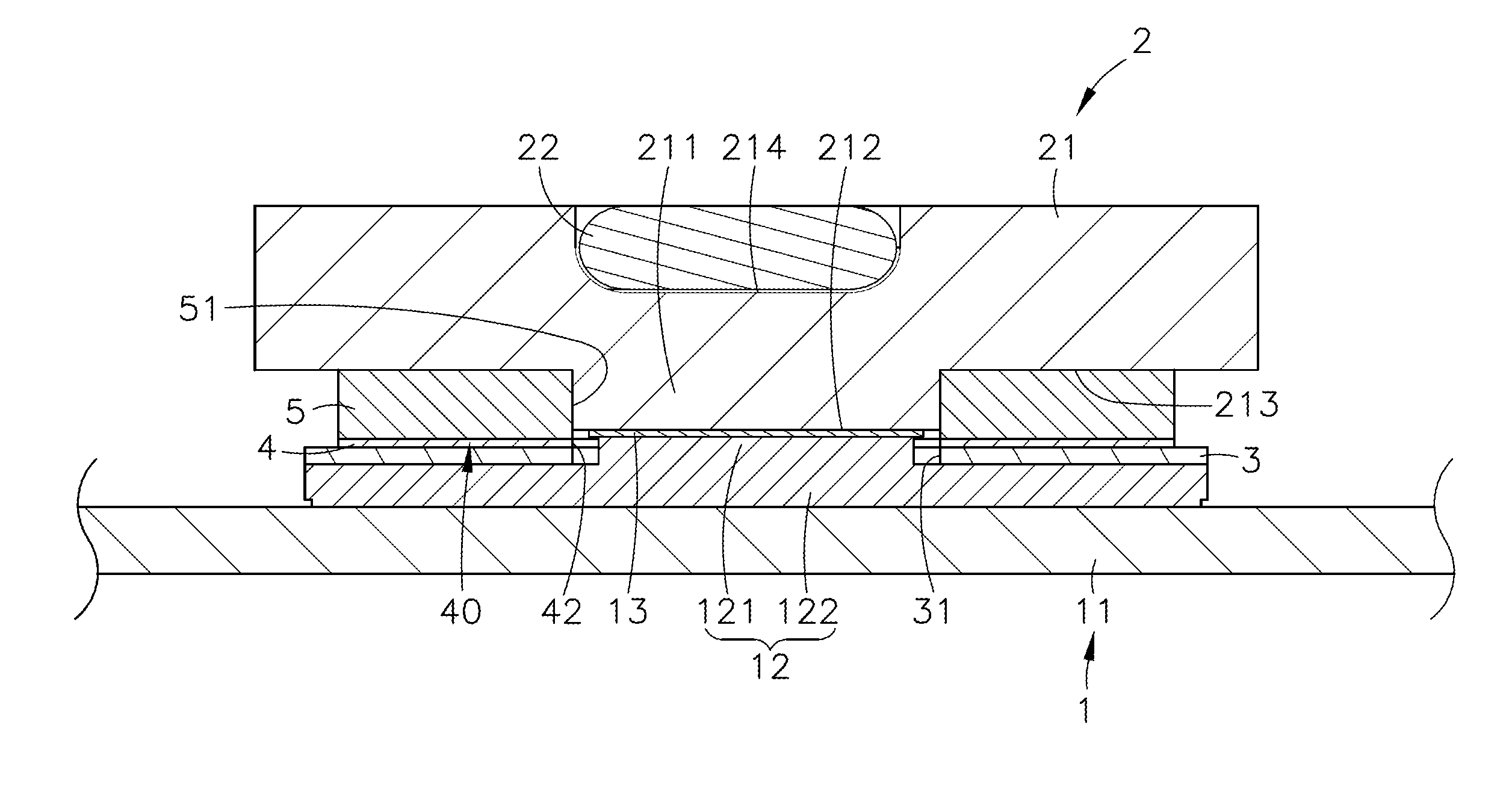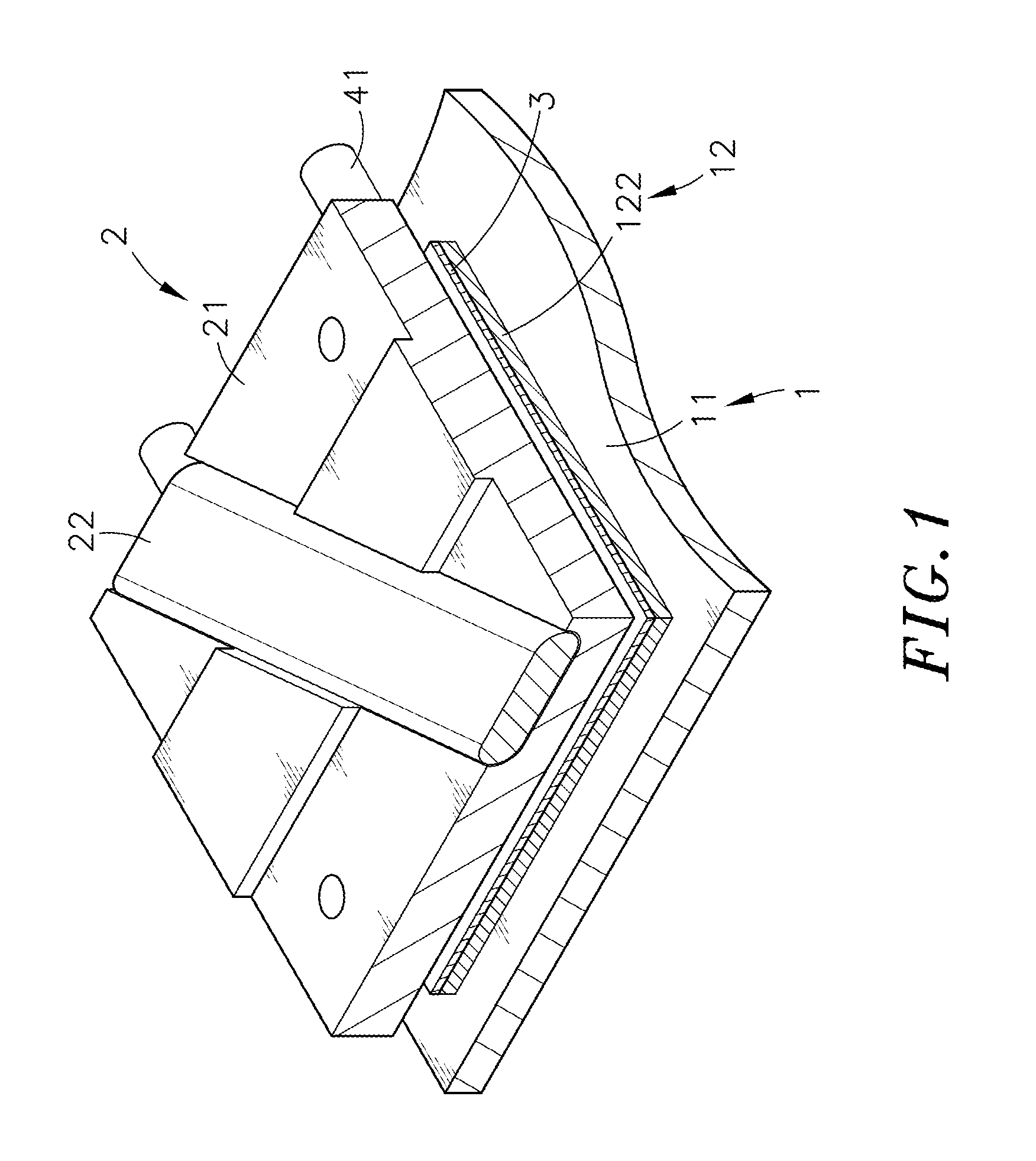Heating element and circuit module stack structure
a technology of stack structure and heat insulating material, which is applied in the direction of heater elements, semiconductor/solid-state device details, instruments, etc., can solve the problems of releasing waste heat, unable to meet the requirements of computer design, and the inability to start up the cpu by wrapping or stuffing the computer with heat insulating materials, etc., to achieve optimal chip unit heating effect, eliminate the drawbacks of using, and facilitate spatial arrangement
- Summary
- Abstract
- Description
- Claims
- Application Information
AI Technical Summary
Benefits of technology
Problems solved by technology
Method used
Image
Examples
Embodiment Construction
[0020]Referring to FIGS. 1-4, a heating element and circuit module stack structure in accordance with a first embodiment of the present invention is shown. As illustrated, the heating element and circuit module stack structure comprises a circuit module 1, a heat sink 2, a heat transfer layer 3, an electric heating element 4, and a thermal insulation component 5.
[0021]The circuit module 1 comprises a circuit board 11, and a chip unit 12 mounted at the top side of the circuit board 11. The chip unit 12 has its one side bonded to the circuit board 11, and its other side kept in close contact with a thermally conductive base member 21 of the heat sink 2. The thermally conductive base member 21 of the heat sink 2 has a bottom wall 213, and a flat bottom block 211 protruded from a center area of the bottom wall 213 and kept in close contact with the chip unit 12. The heat transfer layer 3 is mounted in between the bottom wall 213 of the thermally conductive base member 21 of the heat sin...
PUM
 Login to View More
Login to View More Abstract
Description
Claims
Application Information
 Login to View More
Login to View More - R&D
- Intellectual Property
- Life Sciences
- Materials
- Tech Scout
- Unparalleled Data Quality
- Higher Quality Content
- 60% Fewer Hallucinations
Browse by: Latest US Patents, China's latest patents, Technical Efficacy Thesaurus, Application Domain, Technology Topic, Popular Technical Reports.
© 2025 PatSnap. All rights reserved.Legal|Privacy policy|Modern Slavery Act Transparency Statement|Sitemap|About US| Contact US: help@patsnap.com



